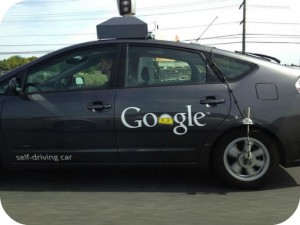 Even though stories about self-driving cars have appeared in the news for years now, the concept still seems almost too futuristic to be true. Autonomous autos are far from science fiction, however. In fact, some experts estimate that driverless cars will eventually reduce America’s 33,000 annual road fatalities by 80 percent. Carmakers recently took one step closer towards this goal when the National Highway and Traffic Safety Administration (NHTSA) told Google that its artificial intelligence system could be legally recognized as a driver. While this marks a major milestone on the road to regulatory acceptance, many other obstacles remain in the way before driverless vehicles achieve total compliance.
Even though stories about self-driving cars have appeared in the news for years now, the concept still seems almost too futuristic to be true. Autonomous autos are far from science fiction, however. In fact, some experts estimate that driverless cars will eventually reduce America’s 33,000 annual road fatalities by 80 percent. Carmakers recently took one step closer towards this goal when the National Highway and Traffic Safety Administration (NHTSA) told Google that its artificial intelligence system could be legally recognized as a driver. While this marks a major milestone on the road to regulatory acceptance, many other obstacles remain in the way before driverless vehicles achieve total compliance.
For starters, the NHTSA must decide whether or not to outfit autonomous cars with standard operating tools like steering wheels or brake pedals. The state of California argues that self-driving cars aren’t smart enough to be sold without these key features. Carmakers, on the other hand, claim that autonomous autos are much safer when passengers don’t have the ability to interfere with the steering system. That brings about another big question: what sort of training should these passive operators have in the first place? Lawmakers insist that only licensed drivers should be able to operate self-driving vehicles. But the lessons that are currently taught to new drivers won’t necessarily be applicable for autonomous autos. Regulators might have to come up with a different type of driving test altogether for “car operators” rather than “drivers.”
While self-driving cars face enough problems from human regulators, they’re also up against the unforgiving forces of Mother Nature. Driverless cars detect their surroundings through a system of cameras and lasers that bounce off objects to determine their shape and location. These instruments work perfectly in the clear California climates where Google does most of their testing. Once some snow starts falling, however, a driverless car’s field of vision becomes severely clouded and unable to read lane lines. Carmakers have tried to solve the problem by moving sensors behind the windshield where snow and ice cannot reach. Although this prevents severe forms of “snow smoke,” developers say they’re still far away from a car that can drive in any type of weather. Fixing this feature will be necessary for carmakers if they want to appeal to the 70 percent of Americans who live in the snow belt.
Questions:
- Should the government require operators of autonomous autos to have a driver’s license?
- Will self-driving cars eventually replace regular vehicles?
Source: NPR Staff, “What’s Next for Self-Driving Cars?” NPR, February 22, 2016; Keith Naughton, “Self-Driving Cars’ Big Roadblock: Winter,” Bloomberg BusinessWeek, February 16-21, 2016.
